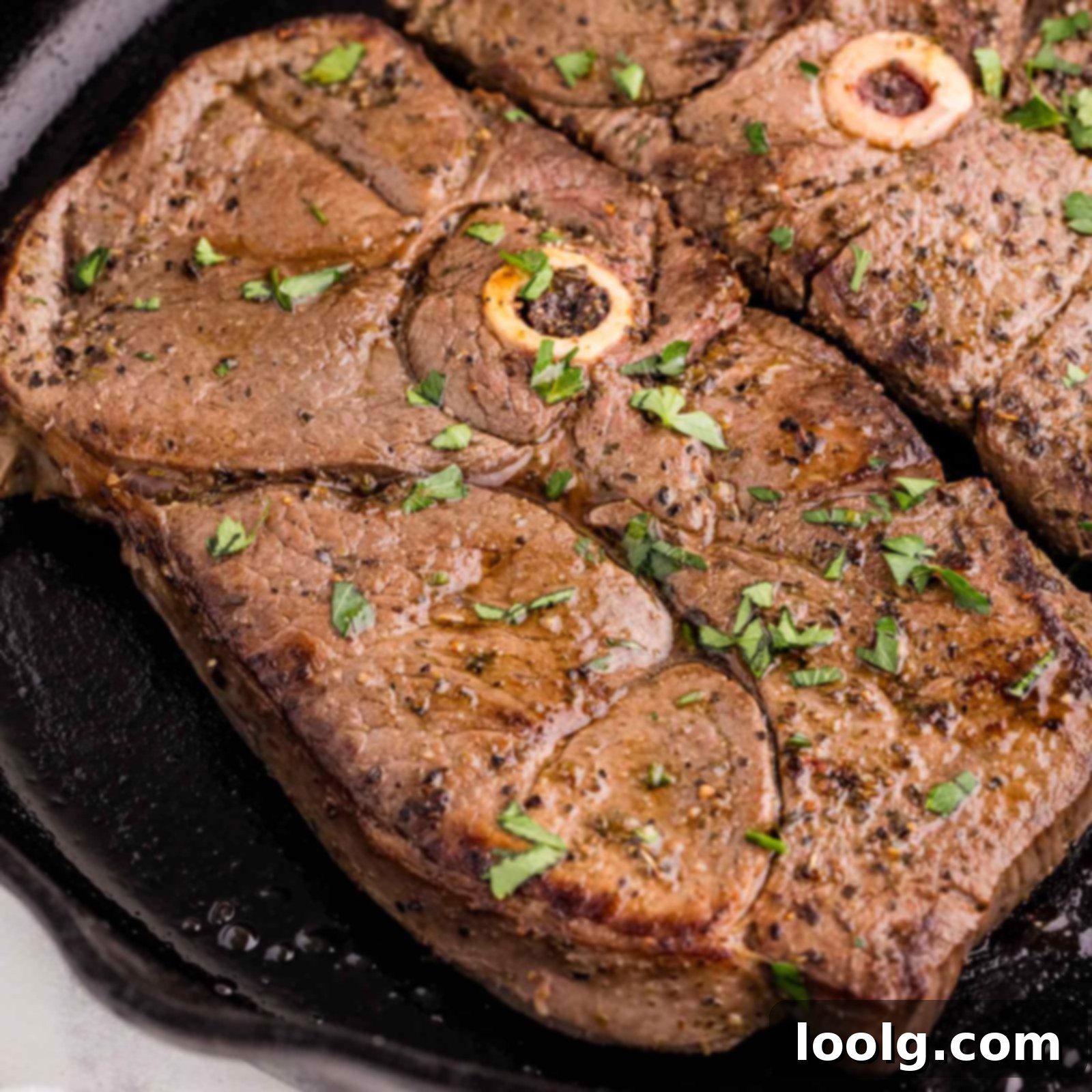Perfectly Seared Venison Steaks: A Tender & Flavorful Recipe for Cast Iron Skillet or Grill
Embark on a culinary adventure with these incredibly tender and flavorful venison steaks. This recipe transforms lean venison into a juicy, perfectly seared masterpiece, whether you choose to cook it in a trusty cast-iron skillet or on a hot grill. Marinated with a vibrant blend of lemon juice, rich olive oil, and aromatic herbs, these steaks are designed for quick preparation, promising a satisfying and elegant meal without the fuss. The inherent leanness of venison means precision is key – a quick sear to a beautiful medium-rare ensures a succulent, pink interior every single time, avoiding any dryness that can sometimes be associated with wild game.
For this exceptional dish, we primarily feature venison round steaks, often referred to as leg steaks. These cuts, sourced from the hindquarters, are known for their robust flavor and lean profile. While they can be firmer than other cuts, our specific marinade and searing technique ensure they emerge wonderfully tender. However, if you’re seeking an even more delicate texture, feel free to substitute with premium cuts like venison backstrap or tenderloin. Be mindful that cooking times will naturally vary depending on the thickness and cut of your venison, but by diligently following the temperature guidelines provided in the recipe, you’ll achieve flawless results, perfectly cooked to your desired doneness.
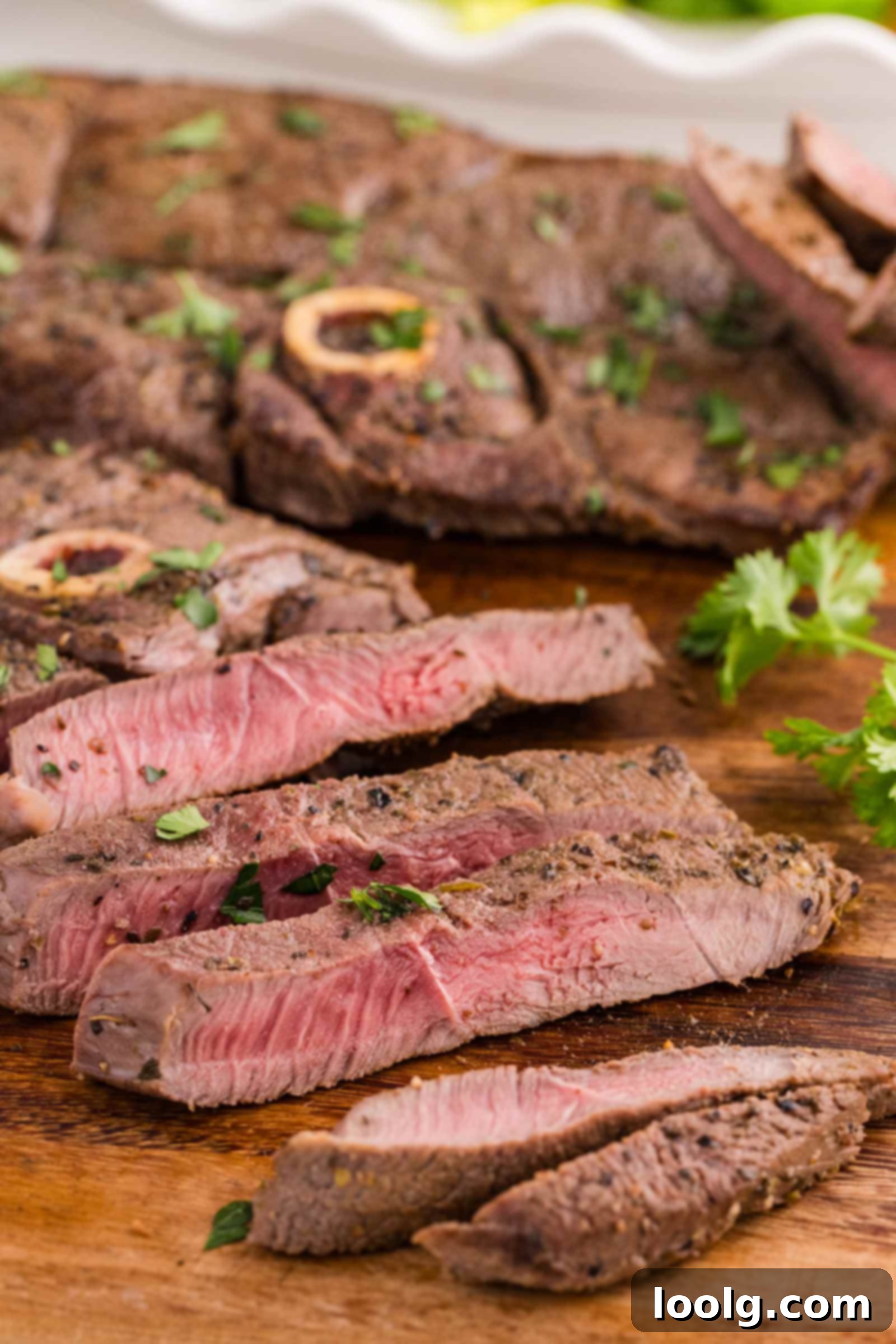
Exploring other venison cuts? I’ve curated specialized recipes for Venison Tenderloin and Venison Backstrap, ensuring perfect results for those prime cuts. If fresh steaks aren’t currently available but your craving for wild game persists, you might also enjoy my recipes for versatile Venison Burgers or a hearty Venison Casserole, both utilizing flavorful ground venison.
What Makes This Venison Steak Recipe Stand Out?
- Effortlessly Quick and Easy: Forget complicated techniques! This recipe involves a straightforward marinade and a rapid sear. Plus, we provide clear instructions for both pan-frying in a skillet and grilling for ultimate flexibility. It’s perfect for busy weeknights yet impressive enough for company.
- Bursting with Flavor: The simple yet potent marinade featuring bright lemon juice, rich olive oil, and classic Italian herbs beautifully complements and enhances the venison’s natural, earthy taste, without overpowering it. Every bite is savory, aromatic, and truly satisfying.
- Naturally Lean and Healthy: Venison is a fantastic choice for a nutritious diet. It’s significantly lower in fat and cholesterol compared to beef, while being packed with high-quality protein and essential nutrients like iron and B vitamins, making it a wholesome and guilt-free meal option.
- Versatile for Any Occasion: Whether you’re planning an elegant dinner party to impress guests or simply looking for a wholesome and exciting meal to elevate your weeknight routine, these venison steaks fit the bill. Their sophisticated flavor and simple preparation make them a perfect choice.
Ingredient Notes for Perfect Venison Steaks
While the full recipe with precise measurements is detailed below, here are some essential notes on key ingredients to help you achieve the best results with your venison steaks.
- Venison Steak: This recipe is optimized for venison steaks approximately 1/2-inch (1.25 cm) thick. Thicker cuts will require a slight increase in cooking time. The golden rule with venison is to avoid overcooking at all costs, as its lean nature means it can dry out very quickly. Consider using an instant-read meat thermometer for accuracy. You can use various cuts like round steaks, backstrap, or tenderloin, adjusting cook times accordingly.
- Freshly Squeezed Lemon Juice: This isn’t just for flavor! The acidity in fresh lemon juice acts as a natural tenderizer, gently breaking down muscle fibers in the lean venison. It also adds a wonderful brightness that cuts through the richness of the meat, elevating the overall taste profile. Always opt for freshly squeezed over bottled for the best flavor.
- Olive Oil: Essential for the marinade, olive oil helps to lock in moisture during the marinating process and contributes to a beautiful, golden-brown crust when searing. You’ll also need a small amount for the pan when pan-frying. If you prefer, other neutral oils with a high smoke point, such as grapeseed or avocado oil, can be used.
- Italian Seasoning: This blend typically includes dried basil, oregano, rosemary, thyme, and marjoram, providing a classic, savory herb flavor that pairs exceptionally well with venison. Feel free to experiment with your favorite seasoning blends or create your own mix of dried herbs like sage, thyme, and garlic powder for a personalized touch.
- Sea Salt & Black Pepper: These fundamental seasonings are crucial for enhancing the venison’s natural flavor. Don’t underestimate their power; they work in harmony with the marinade to bring out the best in the meat.
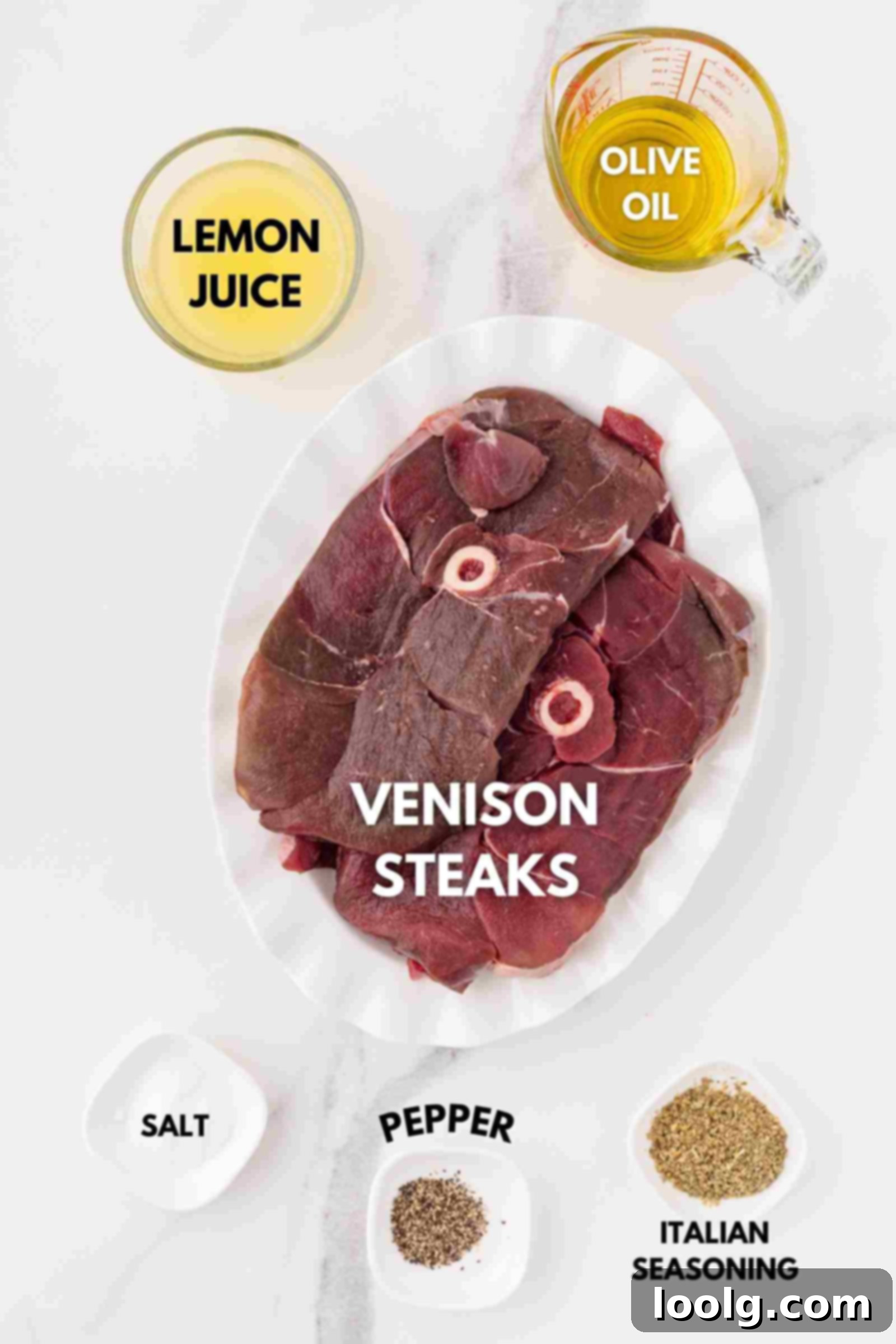
How to Prepare Perfectly Seared Venison Steaks
Achieving tender and juicy venison steaks is simpler than you might think. Follow these straightforward steps for a delicious meal every time.
- Prepare the Marinade: In a medium-sized bowl or a reliable resealable plastic bag (such as a Ziploc bag), combine the fresh lemon juice, olive oil, Italian seasoning, sea salt, and black pepper. Whisk all these ingredients vigorously until they are thoroughly blended, creating an aromatic base for your venison.
- Marinate the Steaks: Carefully add your venison steaks to the prepared marinade. Ensure that each steak is completely coated, allowing the flavors to deeply penetrate the meat. Cover the bowl or seal the bag, then place it in the refrigerator for a minimum of 2 hours. For a more intense flavor profile and maximum tenderness, you can extend the marinating time up to 6 hours. Do not marinate for longer than 6 hours, as the lemon juice can begin to break down the meat too much.
- Prepare for Cooking: Approximately 30 minutes before you plan to cook, remove the marinated steaks from the refrigerator and let them sit at room temperature. This crucial step helps the steaks cook more evenly. Gently lift the steaks out of the marinade (do not rinse them!) and pat them thoroughly dry with paper towels. Drying the surface is essential to achieve a proper sear and prevent the steaks from steaming in the pan, which would result in a less desirable crust.
- Choose Your Cooking Method: Pan-Fry or Grill! Depending on your preference and equipment, you can either pan-fry your venison steaks in a skillet or grill them for a smoky flavor. Detailed instructions for both methods are provided below.
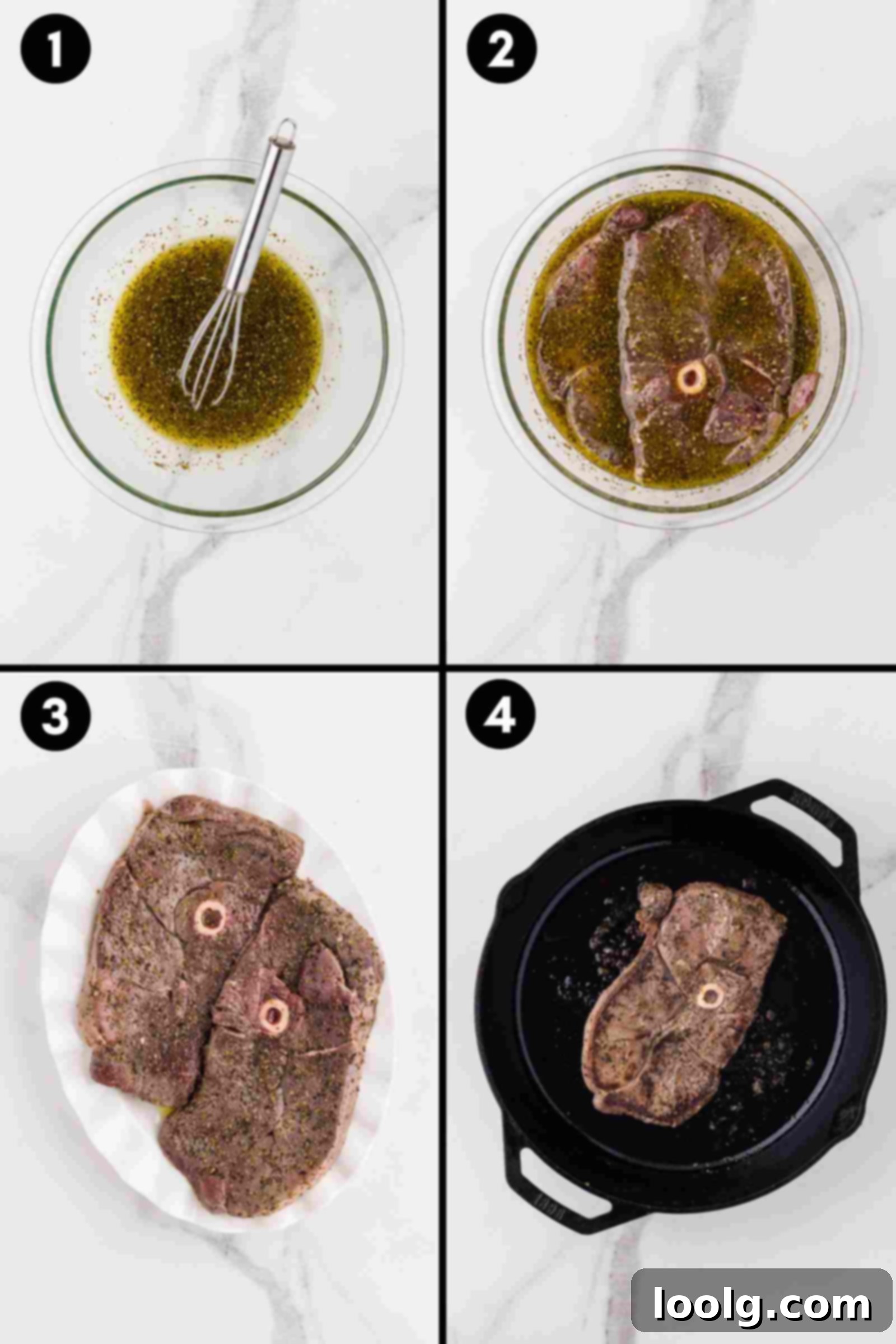
Essential Tips for Success
- Never Skip the Marinade: This is arguably the most vital step for venison. Its lean texture benefits immensely from the acidic and oily marinade, which tenderizes the meat and infuses it with incredible flavor, preventing it from drying out during cooking.
- Ensure Steaks Are Dry Before Cooking: Patting the steaks completely dry with paper towels before they hit the heat is non-negotiable for a perfect sear. Moisture on the surface will cause the meat to steam rather than brown, preventing the formation of that delicious, crispy crust.
- Utilize a Cast-Iron Skillet for Optimal Searing: A well-seasoned cast-iron skillet is a game-changer for searing venison. Its superior heat retention and even heat distribution create an unparalleled, deep brown crust (the Maillard reaction) that locks in juices and enhances flavor.
- Aim for Medium-Rare Doneness: Venison is best enjoyed when cooked to a medium-rare temperature, leaving the center beautifully pink. Overcooking, even slightly, can quickly turn this lean meat tough and dry, diminishing its delicate flavor and texture. An instant-read thermometer is your best friend here.
- Always Rest Before Slicing: After cooking, transfer the steaks to a cutting board and tent them loosely with foil. Allow them to rest for at least 5 minutes. This crucial resting period allows the juices, which have migrated to the center during cooking, to redistribute throughout the meat, resulting in a more tender, succulent, and flavorful steak.
- Use an Instant-Read Thermometer: For consistent and perfectly cooked venison, an instant-read meat thermometer is an invaluable tool. It eliminates guesswork and ensures your steaks reach the ideal internal temperature without overshooting.
- Do Not Overcrowd the Pan: When pan-frying, cook steaks in batches if necessary. Overcrowding the skillet will lower the pan’s temperature, leading to steaming instead of searing, and preventing that desirable crust from forming.
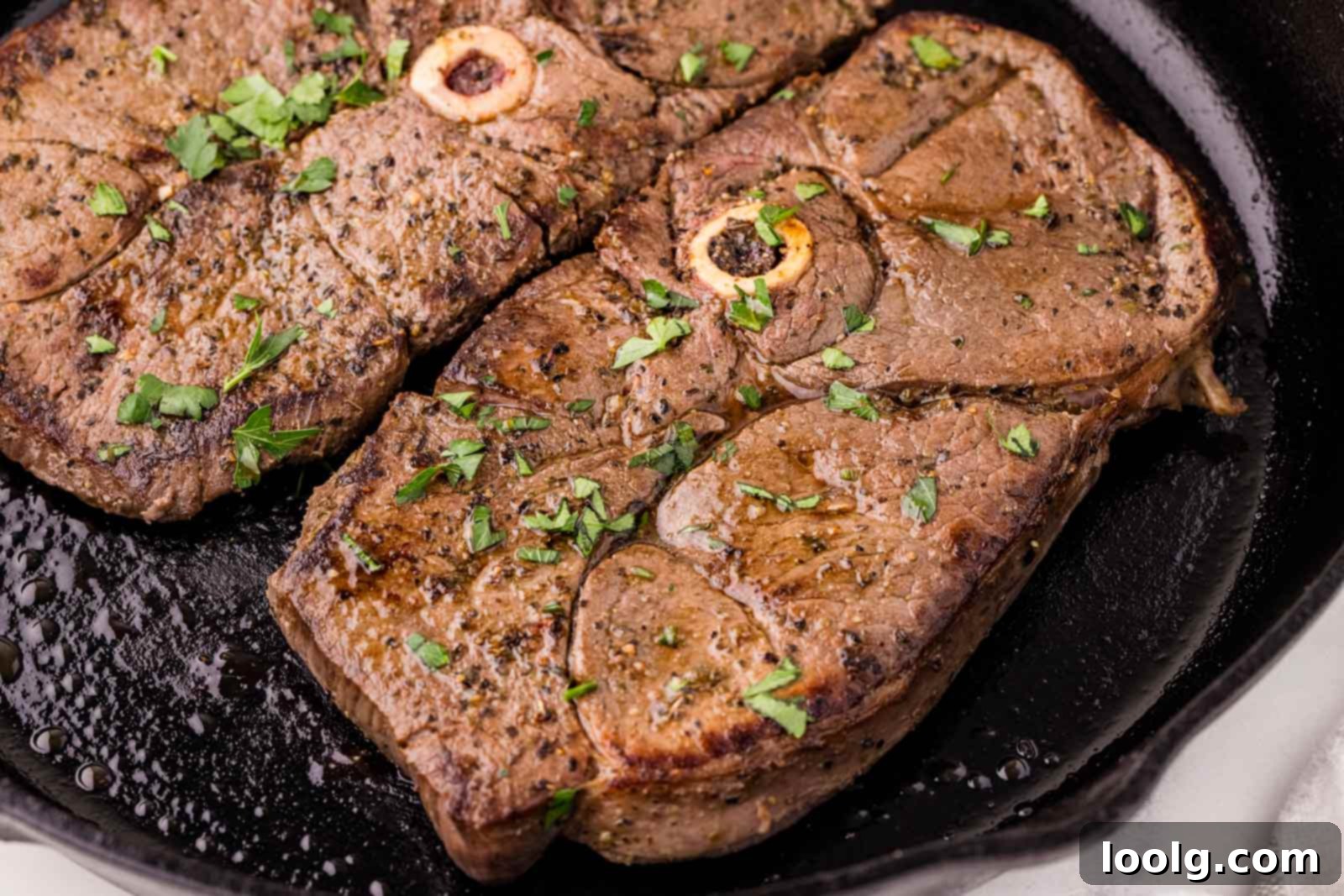
Serving Suggestions for Venison Steaks
These tender venison steaks are wonderfully versatile and pair beautifully with a variety of sides. For a classic meal, serve them alongside creamy mashed potatoes or a hearty wild rice pilaf. Roasted root vegetables like carrots, parsnips, and sweet potatoes complement the venison’s earthy notes perfectly. A crisp green salad with a light vinaigrette offers a refreshing contrast, while sautéed mushrooms or asparagus add another layer of flavor and texture. Don’t forget a good crusty bread to soak up any delicious pan juices! For beverages, a medium-bodied red wine, such as Pinot Noir or Merlot, would be an excellent choice to enhance the meal.
How to Make Ahead and Store Venison Steaks
One of the conveniences of this venison steak recipe is its flexibility for partial make-ahead preparation. You can effectively marinate the steaks up to 6 hours in advance. Simply keep them sealed in their marinade and stored in the refrigerator until you are ready to proceed with cooking. This allows you to spread out your meal prep and ensures the flavors have ample time to develop.
For cooked venison steaks, they are undeniably at their peak flavor and tenderness when enjoyed immediately after cooking. However, any leftovers can be safely stored. Transfer them to an airtight container and refrigerate for up to 3 days. When reheating, exercise caution to avoid drying out the meat. The best method is to gently warm the steaks in a skillet over low heat, just until they are heated through. Alternatively, sliced thinly, cooked venison makes a fantastic addition to cold salads or gourmet sandwiches, offering a unique and flavorful twist to your lunch.
Freezing cooked venison steaks is generally not recommended. The lean nature of venison means that freezing and thawing can significantly alter its delicate texture, often resulting in a tougher and drier consistency that detracts from the overall enjoyment of the dish. It’s always best to cook and consume venison fresh, or store cooked leftovers for a short period in the refrigerator.
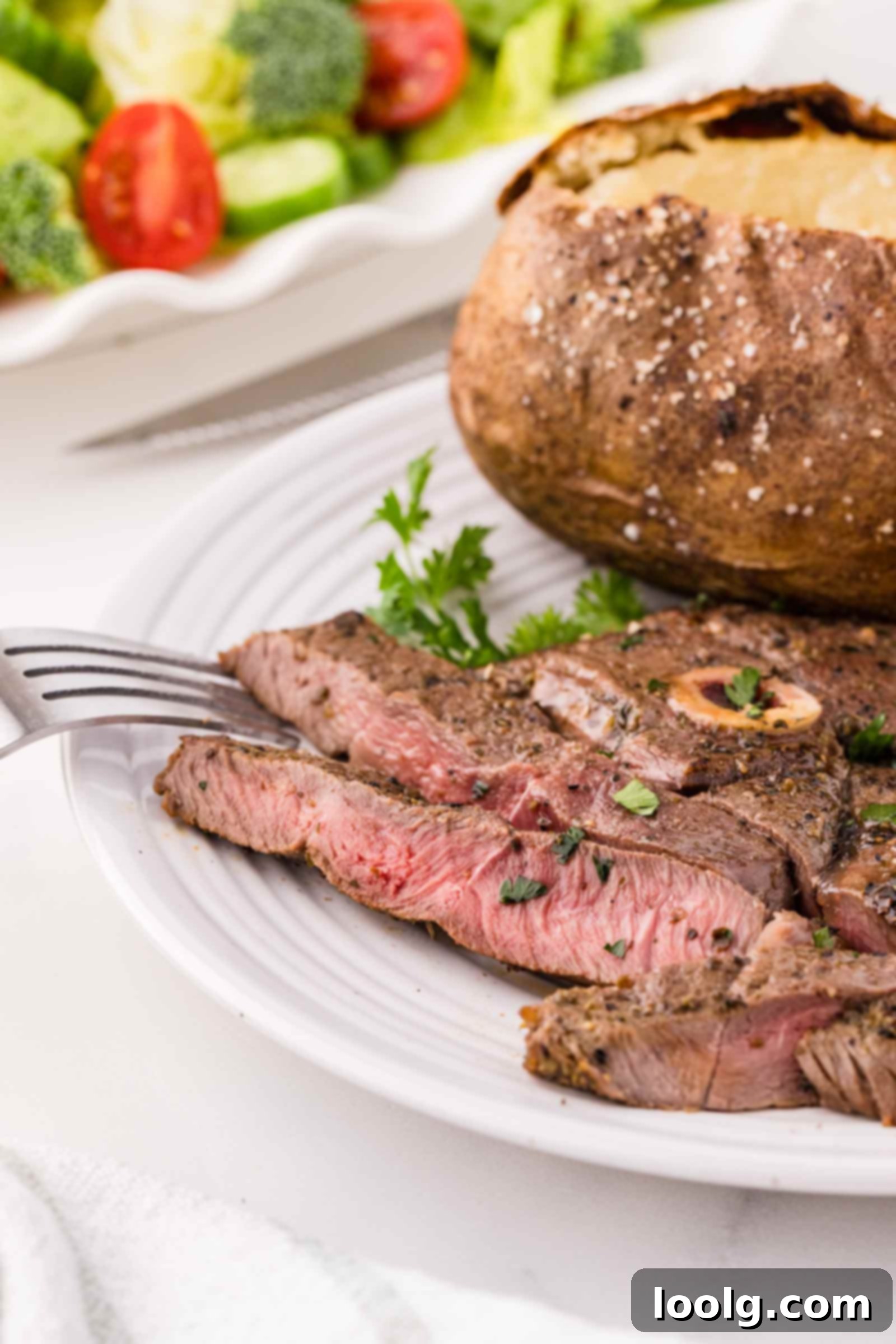
🥩✨🍴 Have you tried these venison steaks? 🍴✨🥩
Please share your feedback by leaving a ✍️review and 🌟 rating – it helps me and others! I so appreciate it. 💖
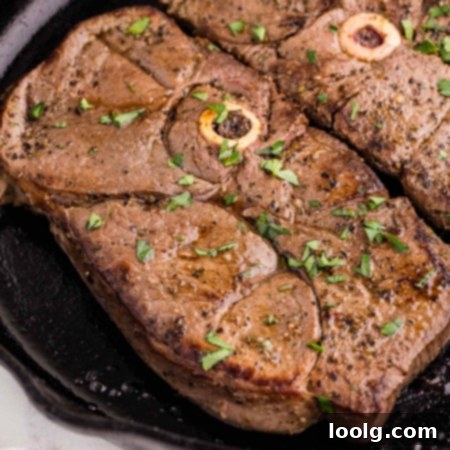
Venison Steaks
Ingredients
- 1 1/2 pounds (680 grams) venison steak about 1/2″ (1 1/4 cm) thick, I used venison round steaks
- 1/4 cup (60 ml) freshly squeezed lemon juice
- 1/4 cup (60 ml) olive oil plus more for the pan
- 2 teaspoons Italian seasoning
- 1 teaspoon sea salt
- 3/4 teaspoon pepper
Instructions
-
In a bowl or Ziploc bag, whisk together all the marinade ingredients (lemon juice, olive oil, Italian seasoning, salt, and pepper). Add the venison steaks, making sure they’re fully coated in the marinade.
-
Cover the bowl or seal the bag and refrigerate for at least 2 hours, or up to 6 hours for a more profound flavor infusion and tenderness. Avoid marinating longer than 6 hours.
-
Remove steaks from the marinade and let them sit at room temperature for 30 minutes before cooking. Lift them out of the marinade and pat them thoroughly dry with paper towels (do not rinse!). This critical step ensures a proper sear and prevents the steaks from steaming in the pan due to excess moisture.
-
If Grilling: Preheat your grill to a medium-high heat, targeting a temperature range of about 400–450°F (205–230°C). Lightly oil the grill grates to prevent the steaks from sticking. Place the venison steaks on the hot grill and cook for 3–4 minutes per side for a perfect medium-rare doneness. Use an instant-read thermometer to check the internal temperature, aiming for 120–130°F (49–54°C). Once cooked, transfer the steaks to a clean plate, tent loosely with foil, and allow them to rest for 5 minutes. The internal temperature will naturally rise to 130–135°F (54–57°C) as they rest, ensuring maximum juiciness.
-
If Pan-Frying (Cast Iron Skillet): Heat a heavy-bottomed cast-iron skillet over medium-high heat until it’s sizzling hot. Add a small amount of olive oil (just enough to very lightly coat the bottom of the pan). Carefully place the venison steaks in the hot skillet, ensuring not to overcrowd the pan (cook in batches if necessary). Sear the steaks for 2-3 minutes per side for a desirable medium-rare to medium doneness (adjust according to your preference). The internal temperature should reach 120-130°F (49-54°C) for medium-rare. After resting, the internal temperature will climb to 130-135°F (54-57°C). It’s absolutely crucial not to overcook venison, as it rapidly becomes tough and loses its inherent moisture and flavor. The steaks should still show a lovely pink hue in the middle.
-
Once cooked, remove the steaks from the heat (either grill or pan) and let them rest on a cutting board for 5 minutes before slicing and serving. This allows the juices to redistribute, ensuring every bite is tender and flavorful.
Notes
- The nutrition information provided is calculated as a courtesy and is only an estimate. I am not a licensed nutritionist or dietitian. For the most accurate nutritional data, consult a professional or use your preferred calculator.
Nutrition
Carbohydrates: 2g
Protein: 52g
Fat: 18g
Saturated Fat: 3g
Polyunsaturated Fat: 2g
Monounsaturated Fat: 10g
Cholesterol: 134mg
Sodium: 679mg
Potassium: 711mg
Fiber: 1g
Sugar: 0.4g
Vitamin A: 20IU
Vitamin C: 6mg
Calcium: 29mg
Iron: 7mg
